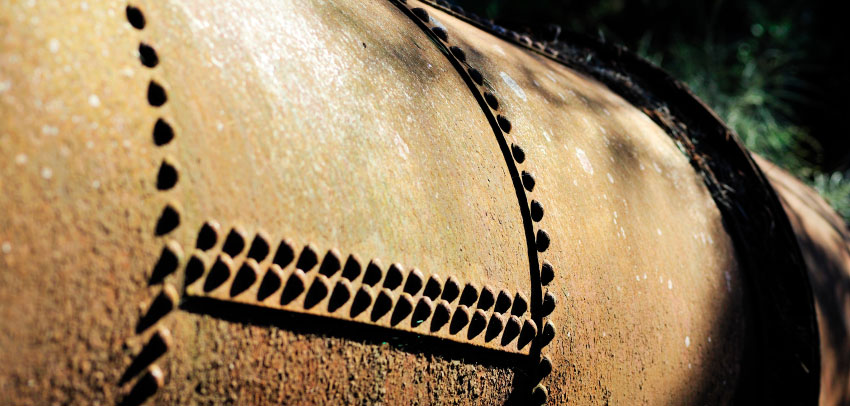Pipeline is still considered the safest, most reliable means of transporting resources such as oil and gas among experts. However, safe as it may be, the threat of ruptures and failures still weigh heavily on the minds of those who maintain and build these networks. There are no minor problems when it comes to the pipeline. Even a slight breakage can result in huge, costly repairs and damages to the surrounding environment, and the culprit is almost always corrosion.

Let’s take a look at how corrosion starts both inside and outside the pipeline.
It’s what’s on the inside that counts
Crude oil, whether heavy or light, isn’t much of a problem when it comes to internal pipeline corrosion. In fact, the oil itself has many corrosion-inhibiting properties.
The trace amounts of water, sulfur, and sediment carried within the crude oil, however, are another story. Due to their difference in density, these small bits and droplets can fall out of the flow and begin to collect on the bottom of a pipeline over a long period of time. Once that moisture touches any exposed steel, it can begin to damage the interior of the pipe in the form of microbial or under-deposit corrosion.
Heat can also be a factor in the wearing away of pipeline walls. The hotter the oil, the better its flow, so most pipelines are insulated to keep its contents at a high temperature. That warmth, however, can also lead to the thinning of the interior walls. This can help corrosion find a foothold within the pipe or cause any existing corrosion to worsen.
As you can see, internal oil pipeline corrosion isn’t a matter of “will it happen” so much as “when.” And that’s just what’s going on inside the pipe.
Pretty and protected on the outside
External oil and gas pipeline corrosion isn’t nearly as difficult to protect against as the internal version. That doesn’t make it any less important to monitor, however, especially with more than 2.5 million miles of pipeline exposed to the elements every single day.
It’s true that oil and gas pipeline has a protective coating applied to its exterior to prevent corrosion and make it more aesthetically pleasing. However, much of the network in service today has aged, and these pipes are still wearing the original coatings they received ten, twenty, even thirty or more years ago. These older coatings can crack and wear as environmental conditions beat away at their effectiveness, opening up a channel for water to make contact with the steel and begin doing its corrosive damage.
Preventing pipeline corrosion starts with you
Keeping the line protected from the dangers of corrosion and quickly addressing it when it’s found should be the top priority of any pipeline project. Thankfully, there have been many advances in anti-corrosion paint and coating technology that can help reduce the likelihood of corrosion considerably. Whether you’re considering applying the latest in interior pipeline linings or a fresh coat of protection on an old pipeline, speaking with a knowledgeable, highly experienced industrial coatings contractor is best. By working together with a company who can suggest the most appropriate products for your needs, you can ensure long-lasting protection for the pipe both inside and out.


